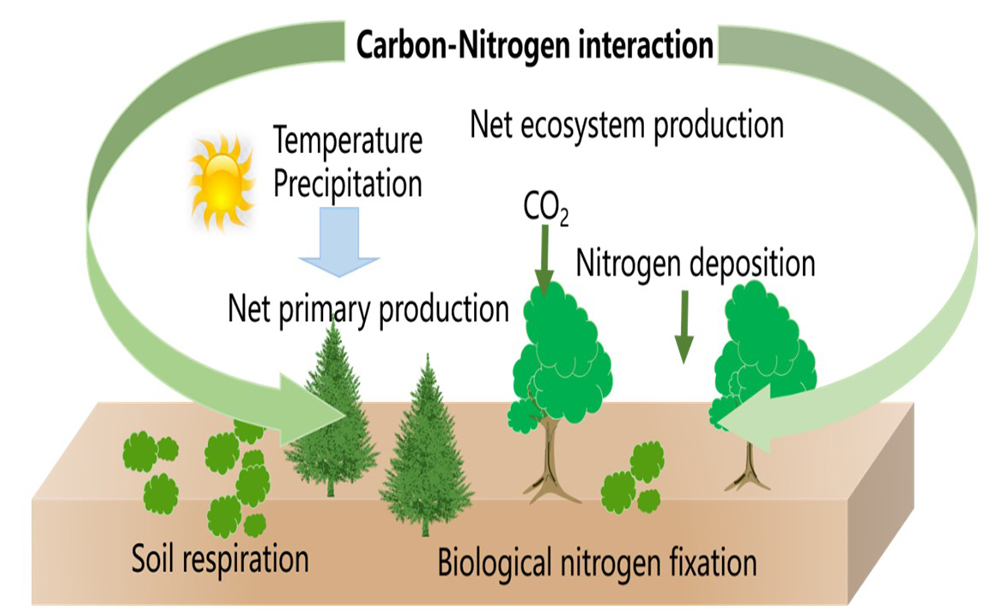The elevating atmospheric CO2 and increasing biological nitrogen fixation and anthropogenic nitrogen deposition caused by climate change are expected to affect the carbon sink trends of the Belt and Road region from 2031 to 2100, according to a study by the Institute of Atmospheric Physics (IAP), Chinese Academy of Sciences.
The study was published in Atmospheric and Oceanic Science Letters.
The rising CO2 concentrations may promote net primary production, and more carbon can be sequestered. The increasing temperature can stimulate soil respiration and promote carbon release. The combination of the two factors will determine the direction and strength of the net ecosystem production trend.
Currently, however, the direction and magnitude of net ecosystem production trends and their responses to climate change, atmospheric CO2 concentrations, biological nitrogen fixation, and atmospheric nitrogen deposition are controversial.
Schematic diagram of the underestimation of the carbon sink trend across the Belt and Road region during 2031–2100. (Image by PENG Jing)
Dr. PENG Jing from IAP and her colleagues simulated the response of net primary production, soil respiration and net ecosystem production in the Belt and Road region to global changes from 1901 to 2100.
Assuming a business-as-usual emissions scenario in the future (namely, RCP8.5), the net ecosystem production trend decreased by 0.4 billion tons of carbon every year per decade from 2031 to 2100 relative to historical levels (1936–2005). "Increasing surface air temperature mainly leads to this change, which drives a greater decreasing trend in net primary production than in soil respiration," said Dr. PENG.
The study reveals that higher biological nitrogen fixation causes a greater increasing trend in soil respiration than in net primary production during 2031–2100 when compared to historical levels, which contributes to a reduction in the net ecosystem production trend by ~40%.
It is worth noting that the projected stress of the decreasing trend in the carbon sink is more than twice that of Phase Six of the Coupled Model Inetercomparison Project (CMIP6), most models from which do not consider carbon–nitrogen interactions.
According to this study, global changes may have cascading effects on carbon sink trends across the Belt and Road region in the future, including the responses of net primary production and soil respiration to climate change, CO2 concentrations, biological nitrogen fixation and atmospheric nitrogen deposition.
However, there remains a lack of understanding regarding the impacts of changes in land use, use of nitrogen fertilizer, and feedbacks between nitrogen and phosphorus. "All these factors could affect the trend and spatial distribution of net ecosystem production," said Dr. PENG.





